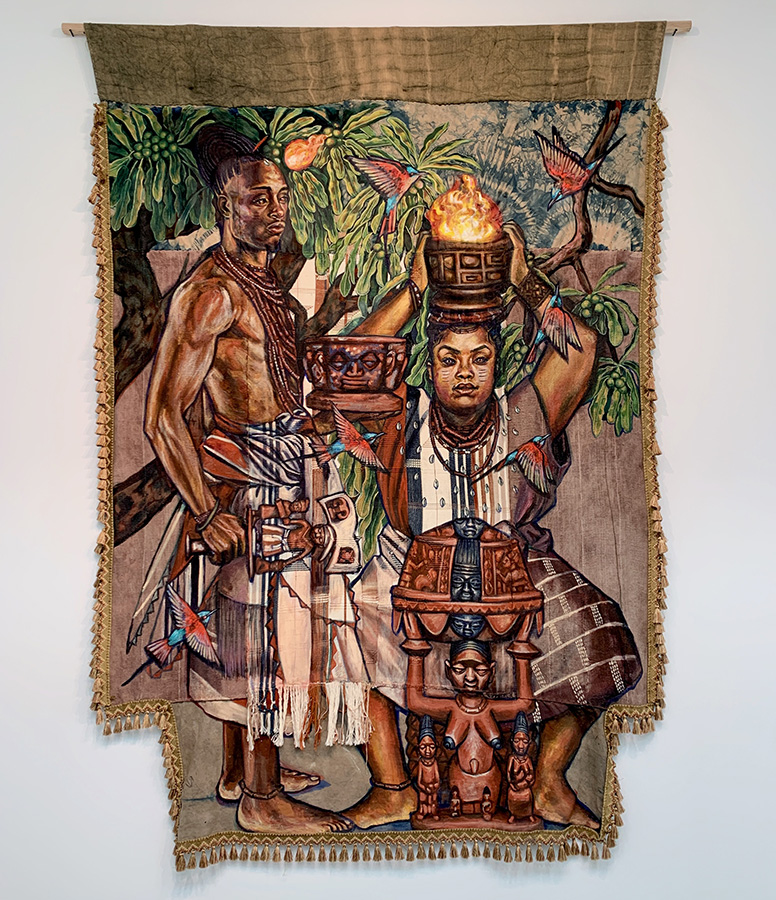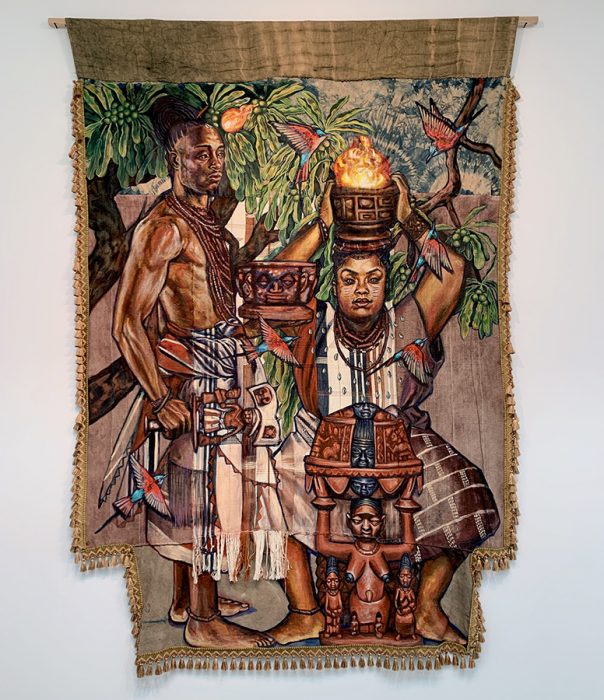November 14, 2024

Transcript by Gallery and Curatorial Fellow Aislinn Doherty

This piece, titled Onisango… They Who Carry the Burden of Fire on Their Head, is acrylic and natural dyes on cloth, measuring 97” wide and 120” tall. Hamilton crafted the canvas upon which Onisango is painted by hand-weaving and hand-dyeingIt depicts a man and a woman holding sacrificial vessels surrounded by red and blue birds in flight. The man is standing, turned towards the woman who appears to be squatting while balancing a vessel of fire on her head. The backdrop is made up of greenery and sky with a small figure visible at the bottom right of the painting.
In this work, Hamilton references the process of initiating the possession of a deity. The painting shows a priest and a priestess in the midst of this process as they work to possess the power of the deity Sango, the god of lightning and thunder. By utilizing the container or object of sacrifice, the priest can possess the power of the deity within the container. After this ritual, the priest will be known as Oni Sango, the title of this artwork. This term comes from the term “oni” which means to possess or own and “Sango” which is the name of a deity.
The birds in the painting also have significance to the story that Hamilton is aiming to tell. In his paper “Alaro: Indigo and the Power of Women in Yorubaland”, Hamilton describes how birds are often “metaphorical manifestations” of divine mothers and the first dyers. In Yoruba spirituality, birds are symbolic of the dyeing arts and the femininity that is connected to it. This iconography spans across Yoruba sculptures as well, where birds are used to depict powerful female forces. As Hamilton describes, women held an important role in Yorubaland as not only the givers of life but also as the ones responsible for the dyeing process which was key to the West African economy. Fabric and weavings were coveted trade items and symbols of wealth. Because of this influence, women were often depicted as strong and formidable In his art, Hamilton emphasizes this representation by illustrating the powers connected to femininity in West African culture. In this exhibition, how are men and women represented in different ways? How does this compare to the representation of men and women in other famous artworks? Look at their expressions, the way they are dressed, and the objects that are included in the works.